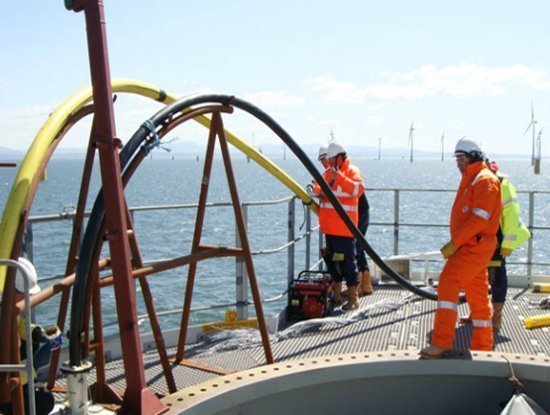Another AAG undersea cable route has a problem, Vietnam’s Internet going internationally is affected again
- Tram Ho
In recent days, many Internet service users in Vietnam have reflected that the network is unstable, it is difficult to access foreign websites, and the uploading of photos and content on Facebook is slow, especially at peak hours. point…
In the information shared with ICTnews today (June 26), a representative of an Internet service provider (ISP) in Vietnam has confirmed that there has just been another undersea cable line, the Asia America Gateway – AAG meets trouble.
The incident on the AAG undersea cable route occurred at 5:40 a.m. on June 22 on the S1H branch, about 102 km from the Vung Tau docking station, affecting Internet connections from Vietnam to international directions to Singapore and Hong Kong (China). The ISP representative said that this incident has affected the quality of Vietnam’s Internet services internationally, but the impact is less than 15% of the total capacity.
The cause of the incident that occurred on the morning of June 22 on the S1H branch of the AAG cable line has not been determined yet. ISPs in Vietnam have not received information about the expected time to repair and fix this problem.

The time to repair the APG undersea cable line is delayed by 2 days
The AAG submarine cable route has a length of 20,191 km, directly connecting Southeast Asia with the US. This cable route has been put into operation since November 2009, passing through Malaysia, Singapore, Thailand, Vietnam (the cable branch turns into Vietnam with a length of 314km, the landing point in Vung Tau), Brunei, Hong Kong (China) ), Philippines and the United States (Guam, Hawaii and California).
Despite continuous problems, maintenance and repair over the years, according to experts, AAG is still an important undersea cable route, accounting for a relatively large proportion of the total capacity. number of Internet connections in Vietnam to international.
Previously, on May 11 and May 25, two undersea cable routes Asia Pacific Gateway (APG) and Asia Africa Europe 1 (AAE-1) had problems, respectively. On June 11, the maintenance to fix the source detection error that occurred on May 11 on the S6 branch in the direction of Hong Kong (China) of the APG cable line was completed, fully restoring capacity on the undersea cable route. this.
As for AAE-1, this undersea cable had a problem on May 25 on the FP10 pair of S1H.1 segment. The fault cable location is about 2,072 km from Cape D’Aguilar docking station, Hong Kong, China towards the Vung Tau docking station, Vietnam. The cause of the problem has been determined to be a fiber break, which partially disrupts the services of carriers connecting to Hong Kong (China) on the FP10 pair of fibers.
The repair and troubleshooting plan on the S1H.1 segment of the AAE-1 international undersea optical cable route has been notified to ISPs in Vietnam in the first week of June, with the estimated time of repair being from June 22 and completed on July 13.
However, on June 21, ISPs in Vietnam received information to adjust the repair schedule of the AAE-1 cable line. Accordingly, the system is expected to reconfigure the source before the repair between 9 pm on July 1 and 3 am on July 2. Troubleshooting on the S1H branch of the AAE-1 cable route will be completed on July 7.
Thus, with the problem of AAG, there are currently two undersea cable routes used by ISPs in Vietnam, AAG and AAE-1, which are experiencing service interruptions. From the experience of many times dealing with undersea cables having problems, this time the network operators have also carried out load balancing, redirecting connections to other undersea cable routes such as APG, IA, SMW3 as well as some routes land cable to ensure the quality of service provided to customers.
ICTnews will continue to inform readers about repair and troubleshooting plans on two submarine cables AAG and AAE-1.
Source : Genk
